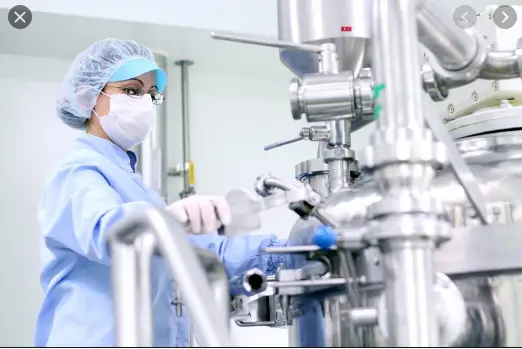Andon: Empowering Real-Time Problem Solving and Continuous Improvement
In today’s fast-paced and competitive business environment, organizations strive to optimize their operations, reduce waste, and enhance productivity. Andon, a critical component of Lean manufacturing, is a visual management tool that enables real-time problem identification and encourages immediate response. By implementing Andon systems, organizations can empower their employees to address issues promptly, foster a culture of continuous improvement, and enhance overall operational performance. In this blog post, we will explore the concept of Andon, its principles, strategies for implementation, and practical applications across various industries.
Understanding Andon: Definition and Origins:
Definition of Andon: Explain Andon as a visual management tool used to signal abnormal conditions or problems in the production process, allowing for immediate response and resolution.
Origins of Andon: Discuss the historical context of Andon within the Toyota Production System (TPS) and its integration into Lean manufacturing principles.
Principles of Andon:
Real-Time Problem Identification: Highlight the key principle of Andon, which is to quickly identify abnormalities or issues as they occur, allowing for immediate attention and resolution.
Empowering Employee Involvement: Discuss how Andon empowers employees to take ownership of problem-solving, encouraging their active participation in continuous improvement efforts.

Benefits of Andon:
Prompt Issue Resolution: Explore how Andon enables quick detection and response to problems, minimizing downtime and reducing the impact on production efficiency.
Continuous Improvement Culture: Highlight how Andon fosters a culture of continuous improvement, encouraging employees to proactively address issues and identify opportunities for process enhancement.
Strategies for Implementing Andon
Designing the Andon System:
Clear Visual Indicators: Discuss the importance of using visual indicators, such as lights or displays, to signal abnormal conditions or production issues effectively.
Standardizing Andon Signals: Highlight the significance of establishing standardized Andon signals and their associated meanings to ensure consistency and clarity.
Employee Training and Engagement:
Andon System Education: Explain the need for thorough training on the Andon system, ensuring employees understand its purpose, functionality, and how to respond to Andon signals.
Creating a Supportive Environment: Discuss the importance of creating a supportive environment that encourages employees to use the Andon system without fear of reprisal, fostering a culture of openness and problem-solving.
Response Mechanisms:
Team Communication: Explore the establishment of effective communication channels between team members, allowing for swift communication and collaboration in response to Andon signals.
Problem-Solving Techniques: Highlight the importance of providing employees with problem-solving tools and techniques, such as root cause analysis or the 5 Whys, to address issues identified through the Andon system.
III. Practical Applications of Andon
Manufacturing Industry:
Assembly Line Production: Discuss how Andon is applied in assembly line production to identify quality issues, equipment malfunctions, or process abnormalities, enabling prompt action and reducing rework.
Poka-Yoke Implementation: Explore the integration of Andon with poka-yoke (error-proofing) techniques to prevent defects and enhance quality at the source.
Service Industry:
Customer Service: Explain how Andon can be adapted to service-oriented industries, such as call centers or hospitality, to signal customer complaints, service delays, or critical issues, allowing for immediate resolution and customer satisfaction.
Service Recovery: Highlight how Andon can be used to address service recovery situations, empowering employees to respond promptly and restore customerconfidence.
Project Management:
Project Issue Management: Discuss how Andon principles can be applied in project management to identify and address issues promptly, ensuring project progress and minimizing delays.
Agile Development: Explore the integration of Andon with Agile methodologies, such as Scrum or Kanban, to enable real-time issue detection, transparency, and continuous improvement.
Overcoming Challenges and Ensuring Sustainable Implementation
Leadership Support:
Leadership Role in Andon Implementation: Emphasize the importance of leadership support in driving Andon implementation, providing resources, setting expectations, and leading by example.
Creating a Learning Culture: Discuss the significance of fostering a learning culture that encourages continuous improvement and empowers employees to utilize the Andon system effectively.
Employee Training and Empowerment:
Providing Adequate Training: Highlight the need for comprehensive training programs to educate employees on the purpose, functionality, and benefits of the Andon system.
Encouraging Problem-Solving Skills: Discuss the importance of empowering employees with problem-solving skills, enabling them to analyze issues and contribute to process improvement initiatives.
Continuous Improvement:
Regular Review and Evaluation: Emphasize the need for ongoing review and evaluation of the Andon system to ensure its effectiveness, make necessary improvements, and address any issues or limitations.
Continuous Learning and Kaizen: Highlight the integration of continuous learning and Kaizen (continuous improvement) principles to sustain the Andon system, promoting ongoing enhancement and employee engagement.
Conclusion
Andon serves as a powerful visual management tool that enables real-time problem identification and empowers employees to take immediate action. By implementing Andon systems, organizations can create a culture of continuous improvement, enhance operational efficiency, and drive excellence in production and service delivery. The principles and strategies discussed in this blog post demonstrate the significance of Andon across various industries, including manufacturing, services, and project management. Overcoming challenges and ensuring sustainable implementation require leadership support, employee training, and a commitment to continuous improvement. By embracing Andon and fostering a culture of proactive problem-solving, organizations can unleash the potential of their workforce, address issues promptly, and drive continuous improvement for long-term success.

